Inspire middle east
The 12th edition of Art Dubai pulled out all the stops this year with a packed agenda of exhibitions and workshops, drawing crowds of more than 27,000 visitors.
As a home for contemporary art from the Middle East and South Asia, the popular regional art expo attracted 105 galleries from 48 countries.
Highlights of the event included contributions from Saudi Arabian artists – and the screening of a virtual reality documentary film exploring the workplaces of contemporary artists in the kingdom.
Capturing the imagination of young ones this year was the Sheikha Manal Little Artists Programme, which featured Japanese-Australian artist Hiromi Tango.
The multimedia professional sought to foster the creativity of children who participated in her workshops via an art installation called the Healing Garden, and through the interplay of light, colour and texture.
A post shared by hiromitango (@hiromihotel) on Mar 22, 2018 at 9:48pm PDT
“We are born to be creative and artistic,” said Hiromi as she praised the imagination of her young attendees.
She went on to identify how some societies can stifle the artistic flair of creative types both young and old.
“My job as a Mumma Gardener is to unlock all of those controlling energies and let it grow healthy.” Rich Tapestry: Many threads, one vision
Two imposing wall hangings by visual artist Karim Noureldin took pride of place at Art Dubai this season.
The artworks typified his signature style of intricate lines and geometric shapes, yet his departure from pen to woven fabrics illustrated his exploration of new techniques.
A post shared by Karim Noureldin (@karim_noureldin) on Mar 20, 2018 at 11:36pm PDT
“So, there (are) wall paintings, there are works within ceramics as well and I was always fascinated by the magic of textile – and I lately started to venture into that,” said Karim.
In the creation of his work, the abstract artist draws inspiration from his travels and strives to depict the diversity of the global cultures he experiences.
“I actually try to go to every botanical garden in every city I visit,” he added. “I like pottery, I like textile, I like ethnographic cultures, I like to see what’s going on in Latin America, in Africa, in India, the Middle East.”
As a part-time art lecturer in his home city of Lausanne, Karim is mindful that the next generation of aspiring artists may face challenges as they try to climb the creative ladder.
According to the artist, whilst the rewards can be substantial, commissions can be hard to come by and the work is often isolating.
“It’s not something that just falls from the sky. You go to work and it’s quite a lonely job as well, so you’ve got to be prepared for that,” he told Inspire Middle East.
He added: “I believe you should find your way [with what you] would like to do. If you find the way, and if you think it’s fitting what your dream is – that’s the goal.”
Satirical Sketches: Sophisticated cartoons from Jordan
Political cartooning in the Middle East is an art that dates back to the late 19th century. Lately, art has been used to deliver a social and a satirical message by some artists in Jordan.
Leading the charge in this emerging Arab art form is Latif Fityani, who uses a digital sketchpad on live television to produce satirical art; touching on societal issues such as the widespread addiction to smartphones amongst the younger generation.
Fast gaining popularity on social media, some of Latif’s artwork garnered international attention with educators in Singapore, who duplicated his work with an interactive structure aimed at educating young children.
“Many people are liking the idea because they get to go through the process of making the cartoon,” said Latif.
A post shared by Latif Fityani (@latiffityani) on Mar 14, 2018 at 12:38am PDT
Latif drew inspiration from Jordan’s popular political cartoonist Emad Hajjaj, known for creating the character Abu Mahjoob in the 1990s, to overcome strict media censorship in the country.
The character, who is fondly referred to as the ‘Homer Simpson of Jordan’, was created to depict the common concerns of an average Jordanian in a humorous manner.
“I can get my secret codes through that cartoon character.” mused Emad, “It’s one of the key features of Arabic cartooning,”
With the rapid growth of social media, various online platforms have now democratized cartooning, particularly in the wake of the 2011 Arab Spring.
For cartoonists like Emad, this is a dream come true.
“I know the Arab Spring becomes more disappointing, but Arabic cartooning is not,” he said. “It’s still exploding. Each time I meet a young cartoonist I feel really proud and really impressed.”
Social eyes: Inspired talent trending online
A post shared by Alaa rostom |علاء رستم (@3laarostom) on Jan 26, 2018 at 12:52am PST
ابتسم Smile . . #يوم_السعادة_العالمي #السعادة #smile #happy #happieness
A post shared by خالد الجابري (@khaledaljabri) on Mar 20, 2018 at 4:27am PDT
A post shared by OTHMAN SELMI (@kidsmokk) on Mar 12, 2018 at 7:17am PDT


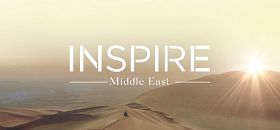

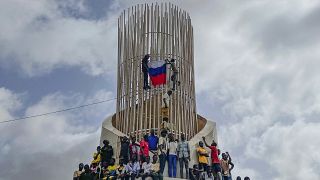


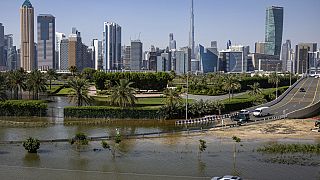
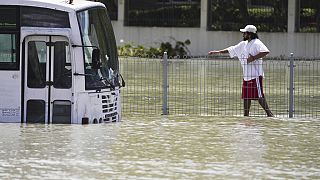

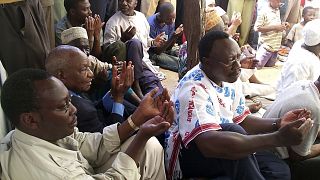
02:20
Horror and destruction of Israel's war illustrated by Gaza artists
02:20
Ancient meets modern: contemporary art show opens at Giza Pyramids
01:11
Paris' Salon du Chocolat opens its doors
02:20
Johnny Depp takes on art world with new exhibition, 'A Bunch of Stuff'
01:00
Tasmanian court excludes men from women-only exhibition
02:20
London: Museum explores 65 years of Barbie history through a design lens